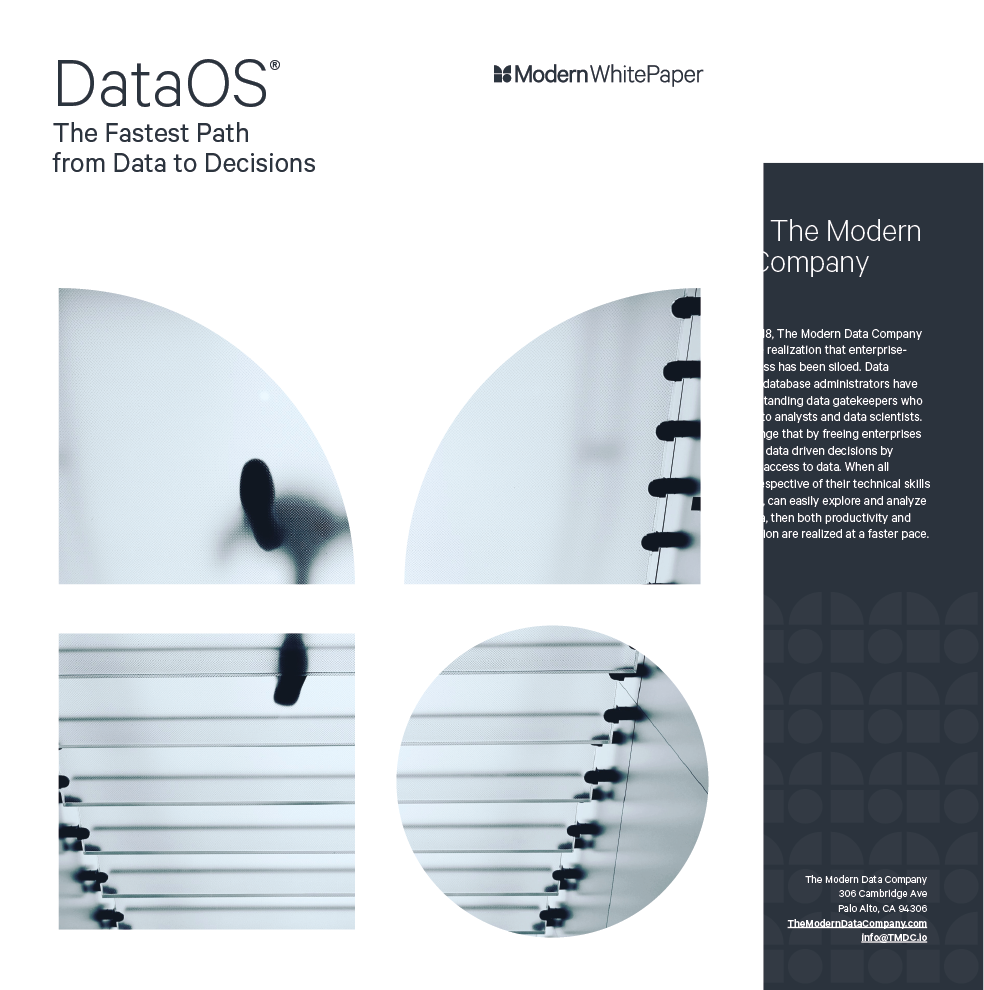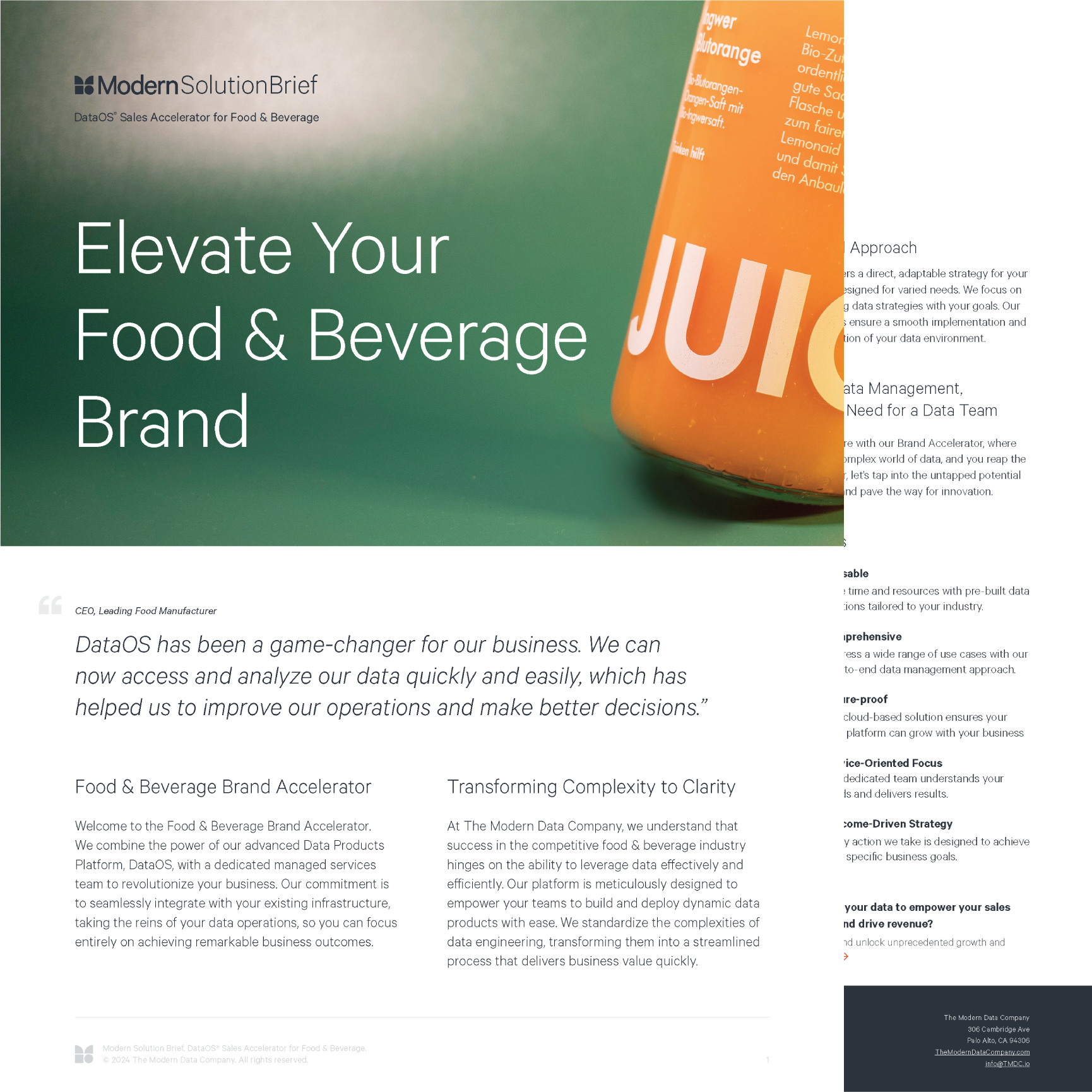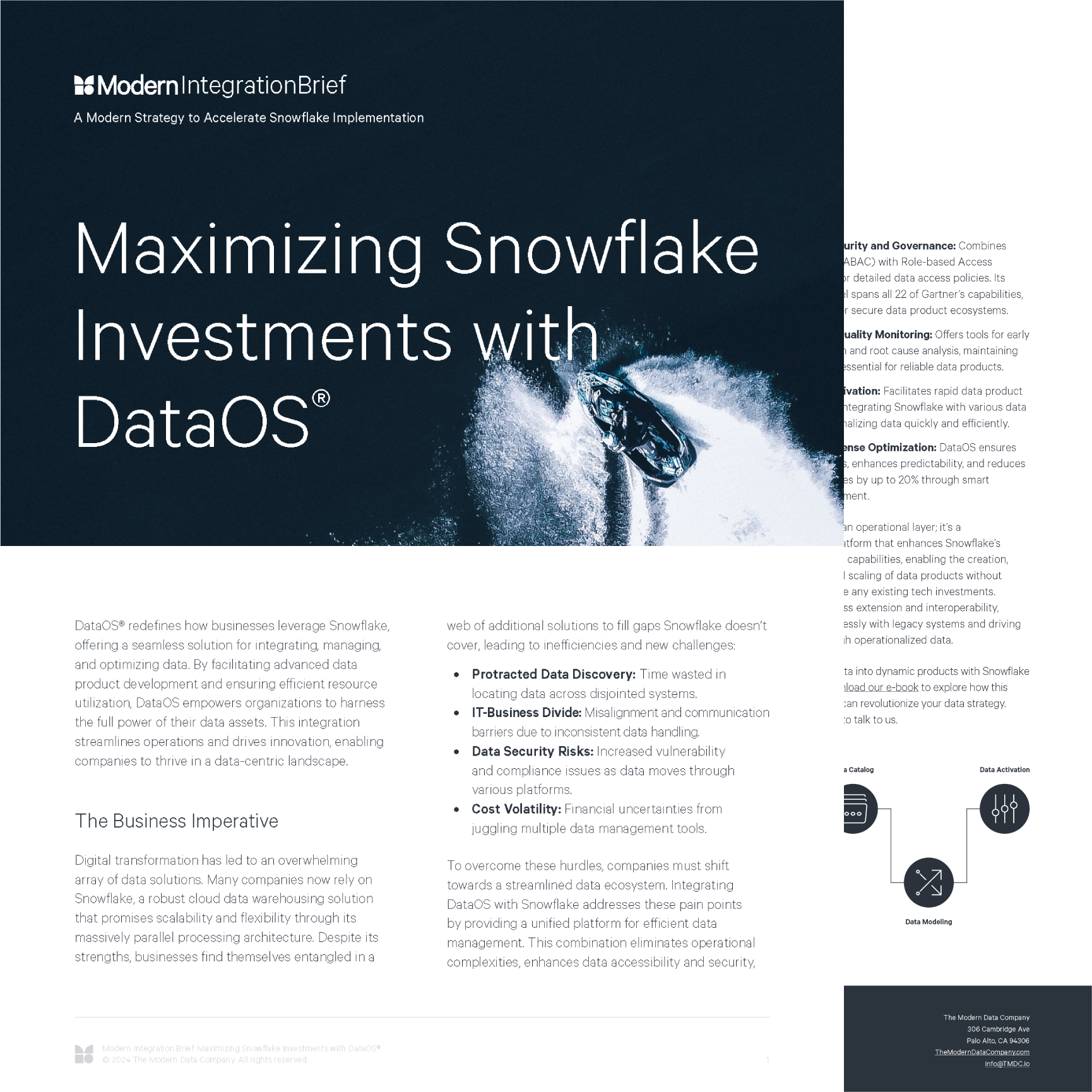
How to drive trusted decisions without changing your current data infrastructure.
Learn more about DataOS® in our white paper.
Companies are spending more than they think maintaining legacy systems, but what’s the alternative? Offloading them? If the thought of burning bridges with legacy systems made you sweat, there is a way to integrate these systems into your new stack without dramatically increasing (already) creeping costs or risking losing your historical data. You need a new way to think about your data warehouses and data lakes—one that addresses how these systems are evolving over time.
If legacy systems are basically doing their jobs, it’s challenging to justify the cost of upgrading. However, it’s time to take a close look at what legacy systems actually cost.
Legacy systems can cost organizations hundreds of millions of dollars to maintain. Each year, those costs grow an average of 15% and, for many companies, make up a large portion of their technology budget. Enterprises end up deep in the weeds managing these data systems with no way out and no way to relieve the burden. However, uncovering hidden costs is a step toward freeing data to achieve its true potential and stopping the budget-bleed. Hidden costs include the following:
Data should be in motion. When IT spends all its time trying to keep warehouses and lakes from becoming swamps (and liabilities), they don’t have as much time to build new tools to ensure the company can use all that data. They can’t innovate, and they can’t explore new ways to reduce silos.
Imagine that a retail company purchases a competitor. It gains valuable data but an outdated warehouse. Now, to understand their customer purchase history, they have to spend money to upgrade away from the original, disorganized framework. Technical debt—inconsistencies and incompatibilities as new components come into play—builds up over time and makes it challenging to integrate new, necessary tools.
Legacy systems can experience downtime thanks to outdated hardware and software. This downtime could cost companies an accurate view of inventory, leading to overspending in purchases and increased storage costs. It could lead to vulnerabilities as others try to manage extracting data around the outage. It also costs companies in missed business opportunities because data is not responsive.
Most retail operations have a combination of legacy warehouses and lakes storing historical data from multiple sources. Digital transformation means connecting each of these systems to functional pipelines and upgrading the architecture to make them both accessible to stakeholders.
Creating a new processing system—an operational layer, if you will—requires an understanding of the differences between these systems.
A data operating system provides the connective tissue to unite warehouses and lakes. It can simplify data pipelines and ensure that both business users and data science teams can access and query data on their own terms.
Upgrading warehouse and lakes should provide:
DataOS provides these things for enterprises currently wrestling with their legacy systems. It can integrate warehouses and lakes, all applications, and tools to create a playground for multiple user types. It removes complexity to future proof your data—all sources, all types, in one place.
A data operating system enables companies to take advantage of agile methodology despite challenges from legacy systems. Download our paper “Data Lakes 101: Making the Most of Data Lakes through Agile Methods” to find out how DataOS can increase speed and innovation while ensuring governance and security remain intact.
Be the first to know about the latest insights from Modern.

The elegance of Data Products is undeniable, but many leaders question the efficacy of their data strategies: Why does the return on data investments often disappoint? Why is proving data's value becoming harder? Why do data models become more cumbersome than...

Data is vital to business but the process of getting from data to insights is often murky. Many on the business side may not even care how it happens but understanding this process matters. It matters a lot. With this in mind, let's explore how to demystify the...

We don't want to restrict the scope of this article to only data leaders and influential executives. As startup folks, we are confident in how individual contributors or ICs, such as Data Engineers, DevOps experts, or even the surprising intern, could influence the...

It's a tale as old as time. A startup manages to disrupt an entire industry only to find itself at a critical juncture a few years down the road. Data, the lifeblood of its operations, was becoming increasingly complex and unwieldy. With each new product launch and...

For today's Chief Data Officers (CDOs) and data teams, the struggle is real. We're drowning in data yet thirsting for actionable insights. Traditional data architectures, with their centralized data lakes and batch-oriented processing, are like bloated, slow-moving...

DataOS Sales Accelerator for Food & Beverage The dynamic food & beverage industry demands a data-driven approach to success. The Modern Data Company's DataOS® Sales Accelerator acts as your all-in-one data concierge. Our pre-built solutions, designed...

Unleashing the Power of AI with Data Products Traditional project-centric data management stifles AI innovation with siloed data, slow workflows, and limited reusability. Enter the era of data products: self-contained modules of data, logic, and infrastructure that...

A Pan-Industry Revolution with DataOS® Unleash the revolution with Data Products powered by DataOS®. These self-contained data units, bursting with actionable insights, offer unmatched flexibility, agility, and compliance across all sectors. From personalized customer...

Cross-Sell Accelerator for Credit Cards In the hyper-competitive BFSI landscape, maximize credit card cross-sell potential with data-driven precision. Cross-Sell Accelerator empowers you to forge deeper customer connections with personalized offers, optimize...

Maximizing Snowflake Investments with DataOSUnleash the true potential of your Snowflake investment with DataOS®, the data product platform that seamlessly integrates, empowers, and elevates your existing infrastructure. Build robust data products faster, eliminate...